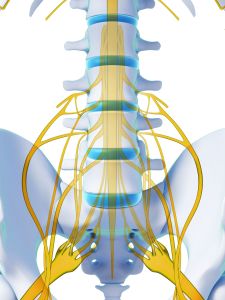Spinal Stimulation – How it Works & When it Helps
Category: Spine | Author: Stefano Sinicropi
 There is a lot of confusion surrounding spinal stimulation. What exactly is it? When can it help patients with back pain and spine conditions? In this blog we are going to talk about how spinal stimulation works and when it can be useful in treating spine conditions.
There is a lot of confusion surrounding spinal stimulation. What exactly is it? When can it help patients with back pain and spine conditions? In this blog we are going to talk about how spinal stimulation works and when it can be useful in treating spine conditions.
What is Spinal Stimulation?
Spinal cord stimulation is a process that involves sending electric shocks to the nerves in the spinal cord. To do so, a small device known as spinal cord stimulator is surgically inserted into a patient’s body. This device sends electric current to the spinal nerves to interrupt pain signals before they can reach the brain. Ideally this process can reduce chronic back pain.
We also talked about a new type of spinal shock stimulation that is helping paralyzed patients walk again in a previous blog.
When can Spinal Stimulation Help?
Spinal stimulation can be a very helpful tool in combating chronic back pain. However, the success rate for spinal stimulation varies. Each patient’s nerves will react differently. Some patients report a significant reduction in pain, others may not experience any pain relief at all. This is because spinal stimulation does not typically address the root cause of the pain – rather it interrupts the pain signal being sent to the brain. If stimulation does not work to reduce pain, a minimally invasive spine surgery may be the best treatment option to fix the root of the problem.
Surgeons will typically do a trial stimulation before implanting the device in the patient’s body. This is to gauge the effectiveness of stimulation in the patient. Spinal stimulators can also be removed fairly easily if they fail to adequately relieve pain in a patient.
If you suffer from chronic back pain or a related spinal condition, contact a spine specialist to see if spinal stimulation may help reduce your back pain.